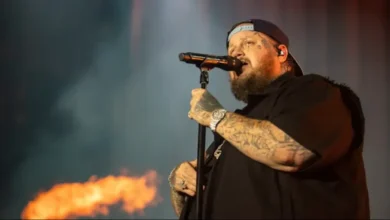Is Taller Better? Examining peso pluma height and Its Influence on Fan Perception

Introduction
Height has long been a topic of fascination in sports, sparking debates among fans and analysts alike. In the world of combat sports, particularly within the peso pluma height weight class, the question arises: does height truly confer an advantage? As fighters enter the ring, their stature can shape not only their performance but also how fans perceive them. Are taller fighters more successful? Do they command greater respect or admiration? With each bout that unfolds, these questions linger like a shadow over the sport. Join us as we dive deep into peso pluma height and its influence on fan perception—where size meets strategy in an electrifying arena.
Defining
Height is often a defining characteristic in the world of sports, especially combat sports. In peso pluma height, or featherweight boxing and MMA, height can shape the dynamics of a match.
Fighters vary widely in stature within this weight class. Some stand tall with long limbs that can create distance and leverage. Others utilize their shorter frames to engage closer and employ power punches effectively.
This variation leads to different fighting styles. Taller fighters may rely on reach advantages for jabs and quick strikes. Meanwhile, shorter athletes might excel in agility and explosive movements.
Understanding how height influences strategies offers intriguing insights into fighter performance. It also plays a role in shaping fan expectations and preferences around what makes an athlete appealing inside the ring or cage. Height isn’t just about numbers; it’s about how those measurements impact fight outcomes and viewer perceptions.
The role of height in combat sports and its impact on fan perception
Height often plays a crucial role in combat sports. It can influence reach, leverage, and the ability to control distance during a match. Taller fighters typically have longer arms and legs, which can provide advantages in striking and grappling situations.
Fans tend to gravitate towards these physical attributes. Height can create an image of dominance or intimidation that resonates with spectators. This perception often shapes their expectations even before the fight begins.
Moreover, promotional materials frequently highlight height to craft narratives around rivalries or championships. A taller fighter is sometimes labeled as more athletic or skillful by fans based on mere stature alone.
However, this focus on height might overshadow other essential skills like technique, strategy, and resilience—qualities that truly define greatness in combat sports. While height matters, it’s not the sole determinant of success inside the ring or octagon.
Case studies of notable fighters in the peso pluma height weight class and their heights
When examining the peso pluma height, it’s essential to look at standout fighters who have made their mark in the ring. A prime example is Oscar Valdez, known for his impressive agility and power despite standing at 5 feet 6 inches tall. His stature hasn’t hindered him; instead, it has contributed to his quick footwork.
On the other hand, we have Shakur Stevenson, peso pluma height who towers over many opponents at around 5 feet 8 inches. This added reach can be advantageous in controlling distance during fights.
Another noteworthy case is Leo Santa Cruz. Standing at approximately 5 feet 7 inches, he combines height with remarkable technique and stamina. Each of these fighters demonstrates that while height plays a role in combat sports strategy, skill and adaptability often steal the spotlight.
Expert opinions on the importance of height in combat sports peso pluma height
Experts in combat sports often have diverse views on the impact of height. Some argue that a taller fighter enjoys distinct advantages, such as longer reach and superior leverage. This can make it easier to land strikes while keeping opponents at bay.
However, others emphasize skill over stature. They believe strategy, technique, and agility can counteract any height discrepancies. A shorter fighter might be quicker or more adept at closing distances, which can turn the tide in their favor.
Coaches frequently stress adaptability as essential for success in the ring. Height may offer certain benefits but is not a guarantee of victory. Fighters must learn to exploit their unique attributes regardless of size.
The debate continues among analysts and fans alike about how much weight should be given to peso pluma height versus other critical factors like experience and mental fortitude.
Fan surveys and their results on height preferences in fighters
Fan surveys reveal fascinating insights into height preferences in fighters. Many fans tend to favor taller athletes, associating height with strength and dominance. This perception often plays a role in their excitement for fights.
In various studies, respondents expressed a clear bias towards taller competitors. They believe that added reach can dictate the pace of a match and enhance striking ability. Fans also feel that height contributes to an intimidating presence inside the ring.
Interestingly, some surveys highlight a divide among different demographics. Younger fans often gravitate toward towering figures, while seasoned viewers appreciate skill over stature. Such nuances showcase how personal experiences shape individual preferences.
Social media buzz amplifies these sentiments further, as discussions about fighter attributes become commonplace online. Height has emerged as not just a physical trait but also an influential factor in fan loyalty and engagement during events.
Conclusion: Is taller really better? The potential influence of societal perceptions on fighter success
When considering the question of whether taller fighters hold an advantage in the peso pluma height class, it’s essential to reflect on both objective data and subjective perceptions. Height does bring certain advantages, such as reach and visibility, which can influence a fighter’s strategy inside the ring.
However, success in combat sports isn’t solely determined by physical attributes. Technique, agility, and mental fortitude play crucial roles too. Fighters like those who have excelled despite being shorter demonstrate that skill often trumps stature.
Societal perceptions also shape our views on height in sports. Taller athletes are frequently idolized, leading fans to believe they possess inherent superiority in their craft. This perception may influence how fights are marketed and how fighters build their personas.
While height can contribute to a fighter’s profile within the peso pluma height category—impacting fan support and engagement—it is just one piece of a much larger puzzle that defines success in combat sports.





